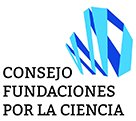Opinion surveys often reflect the preference of the public for scientific subjects. However, audience ratings show exactly the opposite. Up to which point is society interested in science? What real audience not only has the traditional means to access scientific contents, but also others such as blogs or museums?
The Esteve Foundation organized a new debate on scientific journalism which take place on 11 June in Madrid. This time, it was based on the study The public science. It was directed by Pablo Francescutti, of the Group of Advanced Communication Studies of the Universidad Rey Juan Carlos. The work cross checks the most revealing data of the main surveys on the public perception of science, with a detailed catalogue of all current media and their targets.
Four scientists and four journalists debated the results of this research. Both the survey and the discussions produced during the debate will form part of the new Notebook from the Esteve Foundation.
Representing the scientific field were Antonio Ariño, Vice-Rector of Culture and Equality of the Universidad de Valencia; Pere-Joan Cardona, Head of the Experimental Tuberculosis Unit of Hospital Germans Trias i Pujol; Manuel de León, Director of the Institute of Mathematical Sciences; and Rafael Maldonado, chief researcher of the Neuropharmacological Laboratory of Universitat Pompeu Fabra.
The field of journalism and communication was represented by Javier Armentia, director of the Pamplona Planetarium; Esperanza García, editor of the SINC agency; Coral Larrosa, editor of the Informativos Telecinco company; and Nuria Ramírez de Castro, head of science and health of the ABC newspaper.





